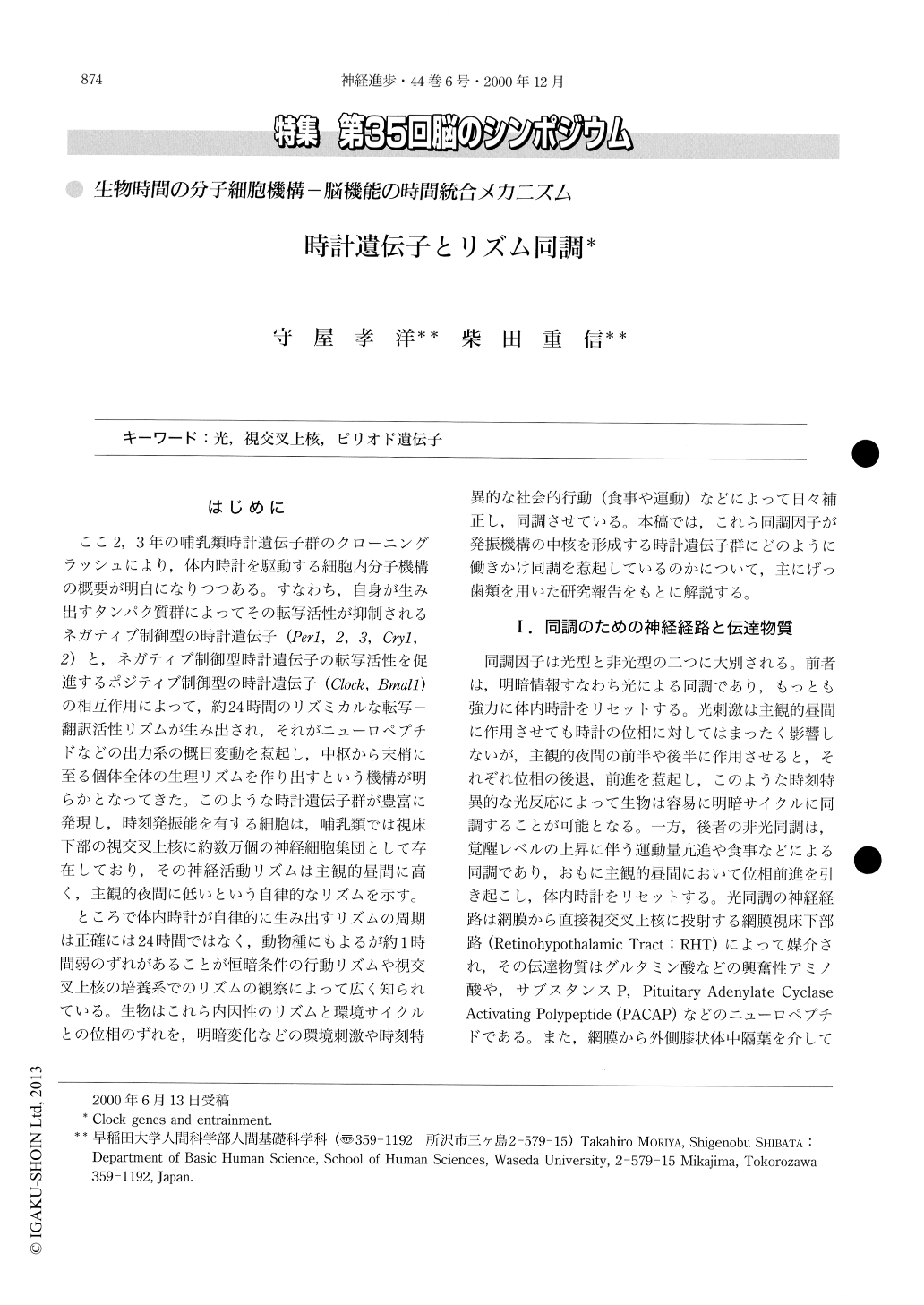Japanese
English
- 有料閲覧
- Abstract 文献概要
- 1ページ目 Look Inside
はじめに
ここ2,3年の哺乳類時計遺伝子群のクローニングラッシュにより,体内時計を駆動する細胞内分子機構の概要が明白になりつつある。すなわち,自身が生み出すタンパク質群によってその転写活性が抑制されるネガティブ制御型の時計遺伝子(Per1,2,3,Cry1,2)と,ネガティブ制御型時計遺伝子の転写活性を促進するポジティブ制御型の時計遺伝子(Clock,Bmall)の相互作用によって,約24時間のリズミカルな転写一翻訳活性リズムが生み出され,それがニューロペプチドなどの出力系の概日変動を惹起し,中枢から末梢に至る個体全体の生理リズムを作り出すという機構が明らかとなってきた。このような時計遺伝子群が豊富に発現し,時刻発振能を有する細胞は,哺乳類では視床下部の視交叉上核に約数万個の神経細胞集団として存在しており,その神経活動リズムは主観的昼間に高く,主観的夜間に低いという自律的なリズムを示す。
Various time cues from environment are known to entrain the biological clock, which is located in the suprachiasmatic nucleus (SCN) in mammals. Current studies began to describe the molecular mechanisms underlying the photic or non-photic resetting of the biological clock. Therefore, we review the recent studies investigating the actions of the photic and non-photic stimuli on the core circadian system which is driven by the interaction among clock-related genes.

Copyright © 2000, Igaku-Shoin Ltd. All rights reserved.


